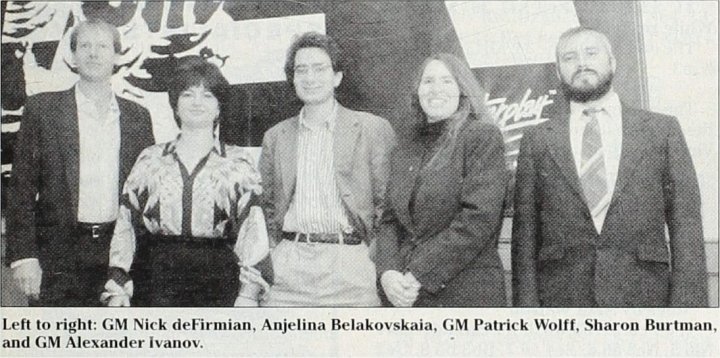Ratings Gap
For each year between 1972–2000, the average USCF rating of the overall U.S. Championship was always more than 300 points greater than the average rating of the U.S. Women’s Championship.
Although the rating differences are already apparent, Ashley Yan conducted an independent samples t-test to compare the means. The results confirmed a statistically significant difference between the average ratings of overall U.S. Championship participants and U.S. Women’s Championship participants. Since the resulting p-value was much less than 0.05, which is the standard threshold for statistical significance, it’s highly likely that the average rating differences are influenced by an external factor.
Given these results, one might conclude that there is a significant difference in skill between men and women. But other explanations are possible.
Participation Hypothesis
We hypothesize that the difference in ratings between the U.S. Women’s Championship and the overall U.S. Championship is expected due to the small numbers of girls and women with USCF memberships. This conclusion remains valid under two assumptions: that women made up 5% of the total USCF membership, and the rating distribution for all female USCF members was relatively the same as the rating distribution for all male USCF members.

Due to the lack of data available to us, the exact percentage of female USCF members between 1972–2000 remains unknown, and the rating distributions based on gender are also unknown. Given that 5% of USCF players were girls or women in April 2000, as mentioned in part one, one might speculate that the percentage was even lower in the years before 2000. Indeed, for the datapoint of 1993, the percentage was lower (4.65%). Further data points may or may not be available from the US Chess. Requesting a data search would require staff hours and thus an outside funding source to pay for US Chess staff time.
If a funded study were conducted, and data points of girls/women in various years from 1972 to 1993 were uncovered (since we already have the 1993 and 2000 data points), these additional data points might demonstrate a substantial participation gap between men and women.
In addition, assuming the rating distributions for men and women were relatively equal, it is expected that the highest ratings for men would be higher than those for women. More specifically, when comparing two distributions with the same average value and variability, the distribution with the larger sample size will logically have greater representation on both ends of the distribution curve.
Extreme Values
When this logic is applied to the U.S. Championships’ rating differences, the difference between the average ratings of the overall and women’s championships would be expected due to a smaller sample size of total female USCF members. The participants in both championships have ratings in the top percentile for their corresponding gender, so the championships’ ratings are the highest or most extreme values in the rating distributions of all USCF players. Since there are substantially more male USCF players than female, the male USCF player distribution would not only have a greater magnitude of players in the top percentile, but the highest ratings would also be greater than those for female USCF players. Extreme values explain why the participants in the overall U.S. Championships generally have much higher ratings than those in the U.S. Women’s Championships.

Chess Life magazine, March 1996 (from the Chess Life and Chess Review Archives)
Graphs and Conclusion
Based on the graph illustrating the average ratings of the U.S. Championships and U.S. Women’s Championships, the rating difference has generally decreased over 1972–2000. Due to the proportion of female USCF members possibly increasing over this period, this trend is statistically expected: The extreme values of the two distributions become more similar as the distributions’ size difference decreases. That the proportion of female USCF members increased between 1972–2000, though, is another assumption we make as we do not currently have much gender-based data for those years.
We conclude that the gender participation gap influences the average rating differences between the U.S. Championship players and the U.S. Women’s Championship players, and, therefore, the difference would be expected. However, our conclusions and the insight we can draw from the given data are limited. There may or may not be available rating distributions from 1972–2000, and overall USCF membership during those years perhaps did not include sufficiently accurate gender coding.
Future Research
In 2001, there was no women’s tournament. In 2004, there was a seven-player U.S. Women’s Championship but no corresponding U.S. Championship. That is, the 2004 U.S. Championship was named the 2005 championship for legal reasons and was a mixed-gender Swiss system. In 2002 (56 players), 2003 (58 players), 2005 (64 players), and 2006 (two 32-player Swiss systems), the women and men played in combined U.S. championships.
The comparison chart found in part one could resume in 2007, with the caution that, for several of those years, the U.S. championships’ averages would be depressed due to large numbers of players competing in the U.S. Championships.
Starting in 2014, both the U.S. Women’s Championship and the U.S. Championship were round robins of smaller sizes. Comparisons would again be possible, as they were for 1972–2000, the focus of this two-part series. A future article could analyze those more recent years, 2014–2020, when the percentage of US Chess female members is above 10%, to see if the rating gap is closing between the U.S. Women’s and the U.S. Championship fields. Also possible is a second historical article, about the years 1950 to 1972 and the average ratings for those years for the U.S. Women’s and U.S. Championships.
Links
The ratings gap and gender: Analyzing U.S. Chess Championships (Part I)

























